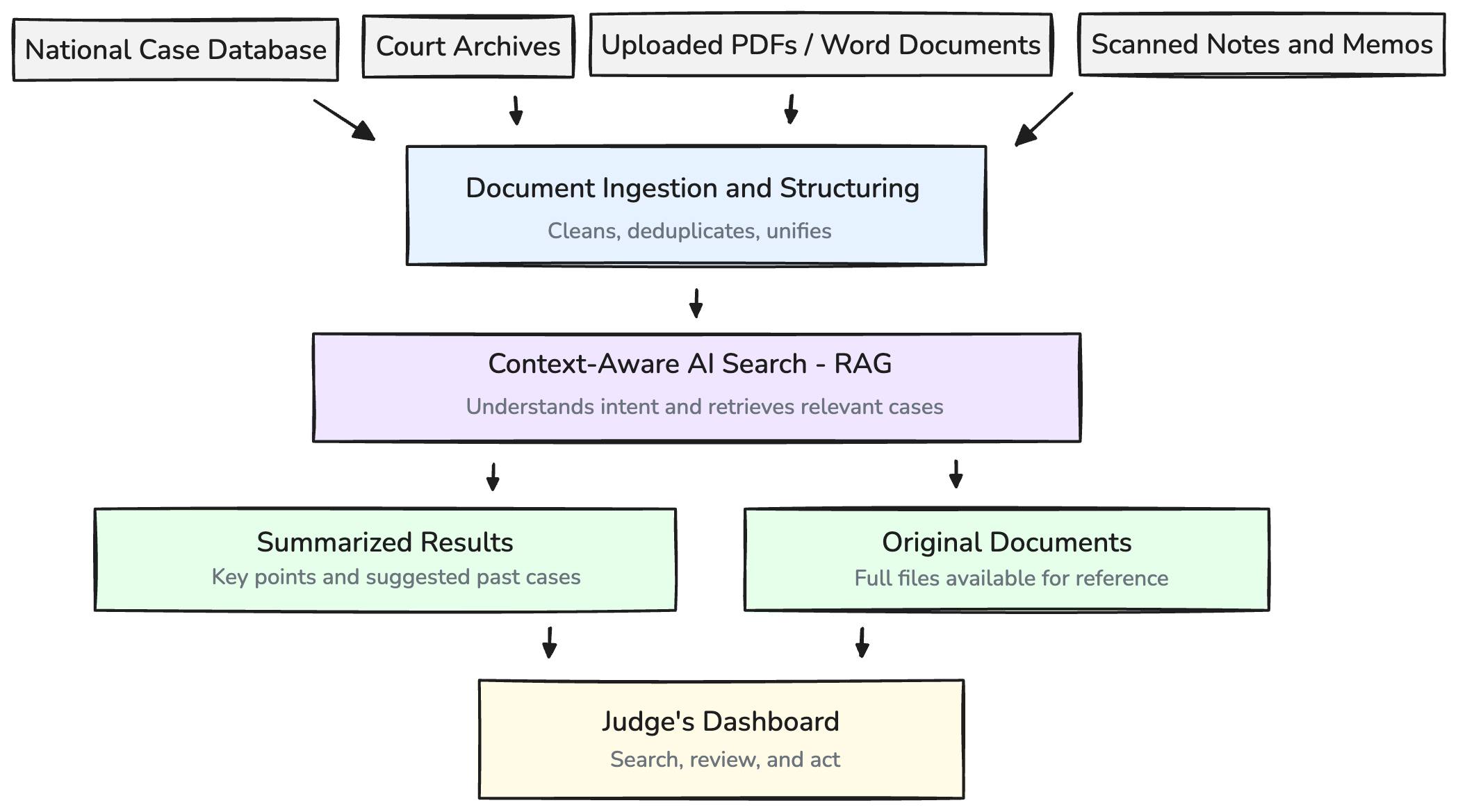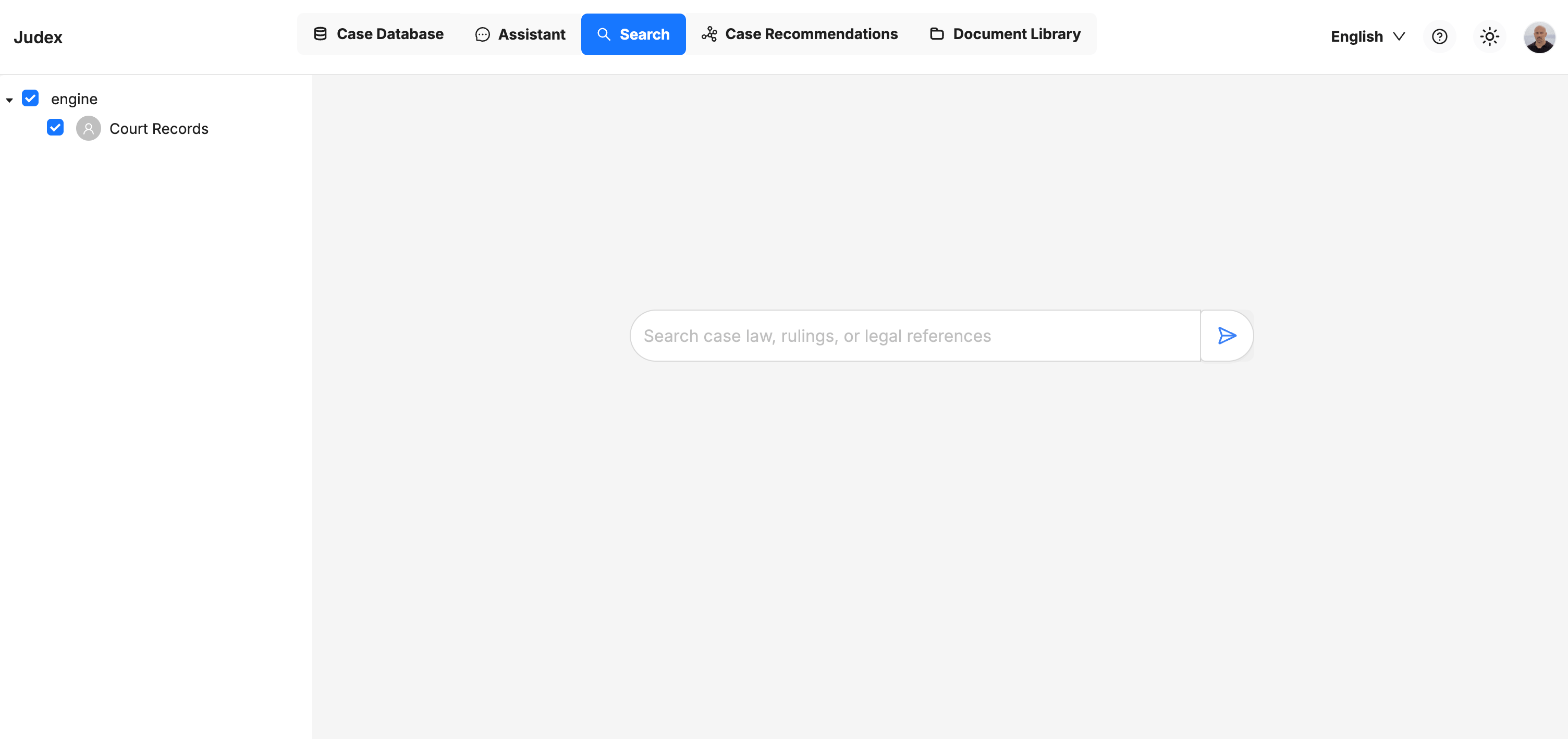
Building an AI Tool That Helps Judges Work Smarter
A case study on reducing legal research time with a centralized AI system
The Legal Research Challenge
Judges often work with huge amounts of information. Legal documents, case files, and reference materials are spread across different databases, formats, and folders. It's not just a matter of quantity, but also how disconnected everything is.
Researching manually through this scattered data takes time, costs money, and slows down decision-making. Even with a team of legal assistants, it's easy to miss something important. The process is exhausting and inefficient, especially when every detail matters.
As a result, legal assistants get overwhelmed, decisions take longer, and the risk of human error increases.
Solving Legal Research with Centralized AI
To address the problem of fragmented legal information, I led the development of an AI-powered search system as part of a European Union–funded project. The goal was to reduce manual research, improve accuracy, and support faster decision-making.
The solution works in two key stages:
1. Normalizing and Centralizing Legal Data
The system brings together documents from multiple sources: national databases, court archives, internal memos, and even scanned files uploaded by judges. It automatically processes these files, converts them into a consistent structure, and stores them in a unified, searchable format. This step eliminates duplication, ensures accuracy, and creates a single, up-to-date source of truth.
2. Smarter Search With AI
Instead of relying on exact keywords, the system uses AI to understand the context and intent behind search queries. It can find relevant information even if it's phrased differently, buried deep in a document, or spread across multiple sources.
At the core is a technique called Retrieval-Augmented Generation (RAG). This allows the system to retrieve relevant content and generate helpful summaries in response to complex queries. It also suggests similar past cases, helping judges make more informed decisions with less effort.
Together, these two layers, data normalization and intelligent search, transform scattered legal documents into an organized, searchable, and highly usable system.

Real Results from Idea to Impact
I led this project from concept to delivery. My role included designing the system architecture, building the AI components, and developing the full end-to-end infrastructure. I also worked closely with judges and legal professionals throughout, shaping the tool around their real workflows and needs.
One of the key reasons the system succeeded was its simplicity. Judges didn't need technical training to use it. The interface felt familiar, and the search experience fit naturally into how they already worked.
The impact was immediate:
- Research time was reduced by more than 70%, allowing judges to find what they needed in minutes rather than hours.
- Document coverage improved by 60%, meaning fewer missed cases, references, or legal memos during the research process.
- Adoption reached 90% across the legal team within the first three months, with consistent daily use from both judges and legal assistants.
- User satisfaction surveys showed 94% positive feedback, citing speed, ease of use, and confidence in the results.
By turning disconnected data into a centralized, AI-powered search experience, the system helped legal teams make faster, more consistent, and more informed decisions.

What This Means for Other Organizations
While this system was built for the legal field, the core challenge it solves is common across many industries: too much scattered information, and too little time to process it.
If your team deals with large volumes of documents across tools, formats, or departments, then the same approach can work for you. AI-powered search and summarization isn't just for courts. It's just as useful for finance teams reviewing reports, compliance officers navigating regulations, or startup founders managing contracts and investor documents.
Whether you're in government, insurance, internal audit, or any business that works with unstructured text, this kind of system can help you move faster, reduce manual effort, and make more confident decisions.